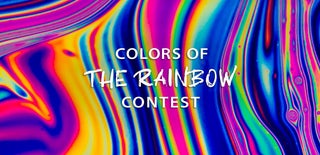Introduction: Cyanotype- Indigo Sun Printing
Hello you!
Long time no see. I have not been very active on Instructables for a LONG time now. I spent the last year or so setting up my own art business! I finally took the leap, quit my job and set out to do what I really love. Apologies for tooting my own horn in the first sentence of this tutorial, but it is all that I have done for so long. So it feels good to say it out loud to the universe.
In this tutorial, I will be walking through how to create cool artwork using cyanotype. Cyanotype is a really nifty photo printing process that was initially used as a low-cost process to duplicate things such as maps or most commonly blueprint. With the advent of low-cost printing, this method has become redundant now and used almost exclusively to make art. So let’s jump right into it.
YOU WILL NEED
Cyanotype part A and B (I got mine from Amazon, Brand Jacquard)
Container to mix them in
Frame optional (glass+ backing)
Brush
Paper clothes pin or anything similar
Pleach Large plate/ tray water
anything to print (here, I am using dried flowers but the options are limitless)
A cute doggo (optional, but highly recommended to keep up spirits)
PS look at her little arm in the flat lay. She inspected every part of the process.
Step 1: The Prep
Ensure you are working in a dark place with no open windows nearby.
Mix the two parts of your ink according to the instructions as mentioned on your product. Mine required parts A and B be to be mixed in a 1:1 ratio.
Once well mixed, coat your paper with the solution. At this point make sure there are no watermarks or strokes, as these will become apparent once you are done. Of course, you can experiment with how water and strokes behave once all developed, but if this is your first time I would suggest you try out something straightforward.
The solution is light green/yellow at this stage, it will turn a lovely indigo blue on UV exposure. As the solution turns blue once exposed to UV, if in case to mix an excess amount, store it in a dark place in a sealed black container or wrapped in aluminum foil. This with ensuring the dye does get exposed. I have stored mine for months this way and it works just as well.
Step 2: Fun Time
This is the part where you get to go crazy.
Once the solution on paper has dried, take whatever object you want to create an impression of and place it on the paper. Sandwich in between the backing and glass, and put on pins to make sure nothing moves. Be mindful of the placement of pins as anything under them will also not develop. As you can see, I am using dried flower, but you can use a host of things.
Some great options include: negative of photographs, print on transparent sheets, leafs/ flowers, lace doily.
Step 3: Wait Wait Wait
Once you are happy with your placement, place it in direct sunlight or a UV lamp if you have one. In my experience exposure time of 25-30 mins is sufficient on a sunny day and of 3-4 hours on an overcast day.
Ensure there are no shadows falling on it as these will show up in the final print. Be patient when exposing as the colors will change rapidly once exposed to light, but if exposure time is small, the colour will wash off in the next step.
Less exposure = bad prints.
If you want to get extra fancy, you can try out multiple exposures. Wherin you expose the same print two times, each with different placement of your objects. This creates a lovely foreground background effect. Once you get the hang of the basics, the sky is the limit with what you can achieve with this.
Step 4: Bath Time
Once adequately exposed. It is time to wash the solution off.
Remove the paper from the frame and wash with water in a tray, agitate the paper a bit to wash the solution off completely. Follow this with a bath of diluted bleach (hydrogen peroxide) and water solution. Finally, finish it off with a water bath.
In order to avoid any patching, mix the bleach very well with water before the bleach bath. As you can see mine turned out patchy for the same reason, however I think it adds to the beauty. If you are wary of using bleach, you can skip this step, as bleaching is done in order to quicken the oxidizing process. If you do not bleach, the blue will oxidize itself with air overtime and become darker.
Step 5: You Are Done!
After a few trials, you will learn what exposure time is working for you. You can also experiment by mixing an assortment of materials like a mesh, ropes, photo negatives, toys, etc while composing. You can add salt/ water splashes while coating the paper and experiment with it!
That is all, these prints are ready to be framed up and adorned on your walls. They look extra special in gallery walls and also make great gifts!
If you liked it, please give it a like. It would mean the world to me if you visit my Etsy Store for see many wonderful art and prints.

Participated in the
Colors of the Rainbow Contest













